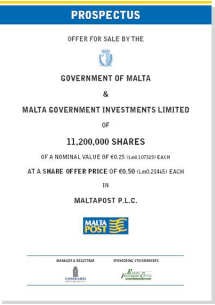CARL WATTS & ASSOCIATES
October 04, 2010

|
Washington DC
|
tel/fax 202 350-9002 |
Securities - Part 8
Prospectus
Prospectus
|
The Use of Proceeds section describes how the company plans to use the money from the sales of securities.
|
|
|
|
The Dividend Policy should explain if and how you will receive regular dividends.
|
|
|
|
The Business section reveals the company’s business plans, strategy, competitors and method of operation.
|
|
There are also a Selected Consolidated Financial Data section which provides further details on the financial; and a Management Discussion section which describes the management past and present performance and its goals for the company.
|
|
There should also be an expense table to tell you exactly what fees you need to pay, for buying and selling, and other ongoing charges.
|
|
The SEC has formalized a rule that requires mutual fund managers to furnish investors with a summary of the important facts they need to make an informed investment decision. This overview appears at the front of a mutual fund's prospectus. Additionally, mutual fund managers may mail investors a summary prospectus in lieu of sending the entire filing as long as the information required in a full prospectus is available online.
|
| These rule changes became effective on Feb. 28, 2009, and mutual fund managers had until Jan. 1, 2010, to implement the new require-ments. |
|
No matter how useful these rules and regulations may prove to be, remember short-term big money schemes, although sometimes possible, are most times frauds that end up eating your life-time savings in the blink of an eye. This is why the insight and knowledge of a professional advisor may be invaluable to your financial status as an investor.
|
 |

You may have heard the term being used in various situations: while looking for a suitable college, or regarding events like the publication of a book, a new project or business venture; and it was
|
|
most usually in the form of a brochure or other kind of document describing the major features, attractions or services the respective legal entity had to offer to investors, participants, clients, members or buyers.
|
|
From a financial point of view, the prospectus is a preliminary statement describing a business or other enterprise for the benefit of prospective buyers, investors or participants. It is also a legal requirement under the Securities Act of 1933, as a part of the registration statement that must be filed with the Securities and Exchange Commission (SEC) before a security may be offered or sold to the public.
|
|
For you, as an investor, a prospectus is a necessary and very useful document you need to familiarize with before getting involved with an investment company.
|
|
Like I said before, it is a legal document which is available to anyone considering making an investment, either for stocks, mutual funds, bonds or other securities, and which provides information on the investemnt opportunity, including a preliminary price, information about the company, type of business, financial statements, property owned and so on. This kind of prospectus is called a Preliminary Prospectus. This is the first offering document provided by a security issuer; some lettering on this document is printed in red, which resulted in the nickname of “red herring” for the preliminary prospectus.
|
|
There is also a Final Prospectus, printed after the deal has been made effective and can be offered for sale, which includes all the information from the preliminary prospectus along with the final price, potential risks to buyers, number of shares to be issued, delivery dates, the underwriting spread and so on.
|
|
The underwriting spread is the difference between the cost per share that the issuing company receives from an underwriting company, and the offering price that the underlying company offers to the public.
|
|
The prospectus literally contains all the information and details you need to make an informed investment decision; it is a binding document that should truthfully disclose any pertinent information to potential investors.
|
|
All in all, there are eight categories that make up an accepted prospectus format: Investment Objective, Performance, Risk, Fees, Management, Services, Buying or Selling Shares and Statement of Additional Information (SAI).
Nevertheless, there are some sections in a prospectus which are of particular interest to you as an investor. |
|
Recent Developments is a section that will tell you about any problems, challenges or recent successes of the respective company.
|
|
The Risk Factors section refers to the amount of risk inherent in any investment, also including information about risks unique to the investment of interest (these risks may include heavy debt, patent disputes, strong competition, etc.).
|